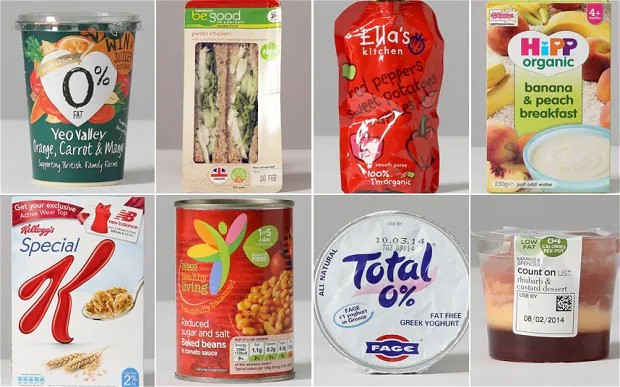The Misleading Simplicity of 'Low Fat'
Imagine walking down the supermarket aisle, looking for a snack. While your stomach craves a decadent treat, your brain nudges you toward a healthier choice. Amidst this internal tug-of-war, your eyes land on a brightly labeled "Low Fat" granola bar. It's perfect, you think, a guilt-free and healthy indulgence. But upon inspecting the nutrition label, you discover that the bar has a sweet secret. The fat content is indeed modest, but the sugar content is unexpectedly high, quietly contradicting the healthy image the "Low Fat" label suggests. This granola bar, while technically truthful in its claim, is misleading, its high sugar content lurking behind the virtuous facade.
The Truth Behind 'Low Fat'
To be clear, the term "Low Fat" is technically accurate, and if the product's fat content is 3g of fat per 100g or lower, the product can legally carry such a claim. However, this claim doesn't capture the whole truth about the product's nutritional value. It is "truthful yet misleading." While the fat content is indeed lower, the high sugar content is often downplayed or overlooked. This partial truth leads consumers to a skewed perception of the product's healthfulness. It's a classic case of being misled by the truth—a single, isolated fact that diverts attention from other, less favorable nutritional information. This selective disclosure creates a health halo effect, where one positive attribute overshadows other important factors, leading to a potentially deceptive overall impression. It's a marketing strategy that, while staying within the bounds of truth, may not provide the full transparency needed for consumers to make informed choices.

The Legacy of 'Low Fat'
The 'low fat' trend that emerged in the late 20th century has had a lasting impact on consumer habits and food marketing. This movement was fueled by public health messages that labeled fats as the enemy in the fight against heart disease and obesity, prompting the food industry to flood the market with 'low fat' products. These items quickly became equated with health, but this equation was oversimplified. Often, the reduction in fat was counterbalanced by added sugars, a substitution that remained under the radar as the 'low fat' label continued to imply a healthier choice. It has taken years for the implications of this substitution to penetrate public awareness, challenging the once accepted notion that 'low fat' necessarily means healthier. The enduring appeal of 'low fat' labels is a powerful example of the influence of heuristics—cognitive shortcuts that link 'low fat' with 'healthy'—which have remained influential despite a more sophisticated understanding of nutrition science. These shortcuts simplify complex dietary choices but can also mask the true nutritional value of foods, perpetuating misconceptions about healthfulness. Consumers are now left to reconcile the legacy of the 'low fat' emphasis with a more comprehensive approach to understanding what constitutes a healthy diet.
Insights from Recent Research
My latest research explores the intricate dynamics of food labeling and its impact on consumer perception. The study reveals a striking insight: products brandishing a 'low fat' claim inadvertently lead consumers to infer that they are also low in sugar, thereby casting the product in a healthier light overall. This assumption has a tangible effect on consumer behavior, increasing the purchase likelihood of these 'low fat' items under the mistaken belief that they are making a choice that is beneficial to their health. However, this belief is often not warranted, obscured by the lack of immediate visibility of other nutritional information. The research further uncovers that when front-of-package (FOP) nutrition labels are prominently displayed, they play a pivotal role in dispelling this illusion. These labels, when they effectively communicate the full nutritional content, empower consumers to assess the sugar content more accurately, even in the presence of 'low fat' claims. This leads to a more informed and discerning evaluation of the product's healthfulness. The presence of comprehensive FOP labels, therefore, is not just informative but corrective, realigning consumer perception with nutritional reality and potentially guiding healthier food choices.
Policy Recommendations for Healthier Choices
In response to these findings, I recommend that policymakers and industry stakeholders collaborate to enhance the clarity and comprehensiveness of FOP nutrition labels. This could involve the development of labeling that more effectively communicates the full nutritional profile of food products, including both fat and sugar content. Additionally, educational initiatives could be implemented to improve consumer understanding of nutrition labels, empowering them to make more informed decisions. By addressing the cognitive biases that lead to the health halo effect and providing clearer information, we can better align consumer perceptions with nutritional reality, ensuring that the quest for healthier options in the supermarket aisle leads to genuinely better choices for our diets.
Public Health Implications
The implications of our findings extend beyond the supermarket aisles and into the broader context of public health. Accurate food labeling is not merely a matter of consumer rights; it is a critical component of a public health strategy aimed at combating diet-related diseases. Misleading 'low fat' claims can contribute to an overall dietary pattern that prioritizes one aspect of nutrition while neglecting others, potentially leading to an imbalance that can have serious health consequences. As obesity and diabetes rates continue to rise globally, the need for clear and truthful food labeling becomes ever more urgent. By ensuring that food labels provide a holistic view of the products' nutritional content, we can empower consumers to make choices that truly align with their health goals. This alignment is essential for fostering a healthier population and reducing the burden of diet-related health conditions. It is a call to action for transparent communication in the food industry, reinforcing the idea that informed choices are the cornerstone of a healthy diet.
Concluding Thoughts
In conclusion, my research underscores the need for transparent food labeling to counteract the misleading health halo of 'low fat' claims. By enhancing label clarity and consumer education, we can align perceptions with nutritional facts, leading to healthier choices. It's a vital step toward empowering consumers and addressing public health challenges linked to diet.

The blog is written by Tim Döring , Assistant Professor of Marketing at the School of Business and Economics (SBE), Maastricht University. He received a PhD in Consumer Behavior from the Stephen M. Ross School of Business, University of Michigan and a BSc in Nutritional Science and a MSc in Business Administration from Friedrich Schiller University Jena, Germany
Also read
-
Maastricht Sustainability Institute (MSI) of Maastricht University School of Business and Economics (SBE) has successfully applied for funding in the ‘Driving Urban Transitions’ program of NWO/ JPI Urban Europe. Three new transdisciplinary projects with international partners have recently started...
-
SBE took first place in the Rotterdam School of Management Star Case Competition (RSMCC). The competition welcomed 16 top-level international business teams of four students, who were tasked with tackling two real-life business cases.
-
Higher air pollution increases the likelihood of people voting for opposition parties rather than ruling parties. This is the major finding of research by Nico Pestel, a scientist at the Research Centre for Education & Labour Market (ROA) at the Maastricht School of Business and Economics.


